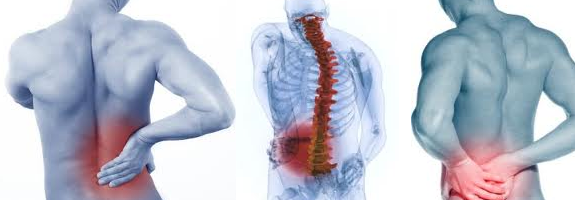 New Health Guide
New Health Guide
More than 3.1 million people in America suffer from some form of back pain. It is the leading cause of absence from work. Back spasms affect the lower portion of the back through muscle contractions. Whether you have injured your back or just irritated the nerves, muscles or ligaments, you will probably find yourself experiencing a muscle spasm as well as acute pain.
You may feel a knot in your lower back as the muscles tense up. Contractions of the back could happen immediately following an injury or they may show up days later.
There are a number of things that can cause back spasms including injuries that affect the ligaments, tendons, and muscles in the back. In some cases they are the result of a more serious medical issue. Lifting something that is very heavy is frequently behind spasms of the back.
There are a number of sports, such as golf and football that can result in lower back spasms because of the repetitive and sudden turns required of the back. If you already have a weak back and abdominal muscles, you are more apt to injure this area further.
Medical issues, such as a ruptured disk or arthritis, can be the cause of back spasms. Pressure on the nerve in the back can be from a bulging or ruptured disk. The effects of arthritis generate pressure in the spinal cord area leaving the legs and back in severe pain.

While it is important to rest the back, particularly if it is from an injury to the back muscle, complete inactivity is not good either. Getting the right amount of rest will help your body heal, but doing too little will create stiffness and tightening of the back. It is suggested you walk slowly and gently for a few minutes at a time as many times a day as you can stand it.
Maintaining an elevated position can help ease back spasms. You can:
When you are in pain, it is hard to be relaxed. On the other hand, remaining in a tense frame of mind would just aggravate the situation further. Try to get your mind off of your back and incorporate one of the following relaxation techniques:
Many people reach for an aspirin or ibuprofen when they have general aches and pains. When it comes to back spasms, you can start with either of those two or you can ask your doctor about NSAIDS – non-steroidal anti-inflammatory drugs. Your doctor can prescribe a higher dosage of these medications to help relieve the pain of lower back spasms a little faster and more effectively than regular over-the-counter medications. Muscle relaxants might help, but many people feel the drowsiness isn’t worth it.
If you have lower back pain, you might want to try walking around with your back straight as you lift your knees up high. You can also raise your arms over your head to stretch your back muscles gently.
You might want to try lying on the floor and bend your knees keeping your feet flat. Take turns pulling each knee to your chest. Hold the knee for the count of 10, then release and return the leg to the floor. Work up to 5 to 10 repetitions twice or 3 times a day for each leg. Stop if your symptoms get worse.
Cold application will help to minimize swelling and provide relief from pain when the spasm first occurs. You can either wrap ice in a towel or use pack of frozen peas for about 12-15 minutes every 2 hours for the first day or two.
Muscle spasms are reduced with the application of heat as it dilates the blood vessels and brings an increased supply of oxygen to the area. You can apply heat with a heating pad as well as disposable heat wraps that you can get at the drug store. Usually heat should be applied after cold application.
You can try using pressure as a form of back spasm treatment by lying down and putting your fingertips over the spasm. Press firmly to see if the spasm stops. Keep pressing down until you get some relief. Make sure you stand up and move slowly after applying pressure.
So you have incorporated all of the ideas here and you have successfully resolved your back spasms. What can you do to prevent another episode? Here are a few simple suggestions you may want to implement right away.